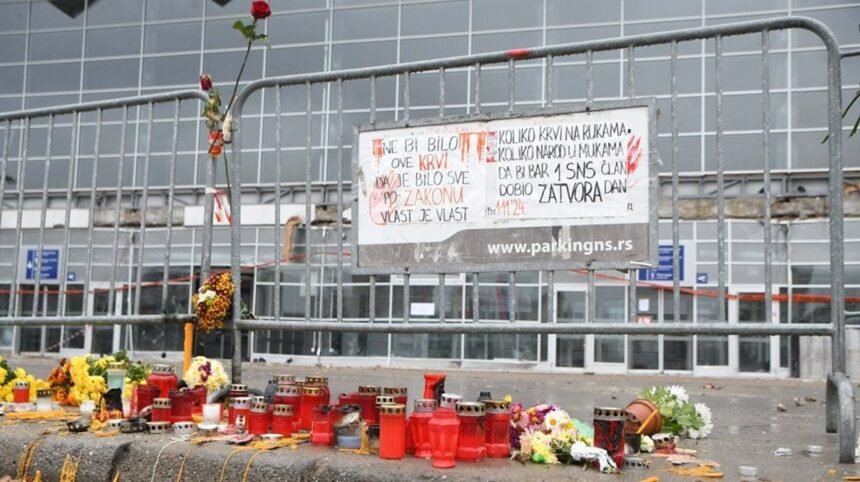Novi Sad/29.10.2025
As Serbia prepares to mark one year since the Novi Sad Railway Station tragedy, mounting evidence suggests that authorities may be deliberately discouraging citizens from attending the commemorative event on Saturday, November 1, organized by the civic movement Students in Blockade.
Although organizers have stressed that the gathering is not a protest but a solemn tribute to the 16 victims among them children authorities appear to be repeating familiar tactics seen before earlier civic mobilizations, notably the March 15 demonstrations in Belgrade, when large-scale disruptions and “security measures” effectively restricted public movement.
Suspicious Timing of Roadworks and “Breakdowns”
In the days leading up to the commemoration, the state-owned enterprise “Roads of Serbia” (JP Putevi Srbije) announced extensive roadworks on key routes leading to Novi Sad. The works, officially described as “rehabilitation” projects, were scheduled from October 29 to November 10, directly overlapping with the date of the gathering.
Sections affected include major approach ramps to and from Novi Sad, including directions toward Belgrade, Šid, Niš, and Čačak routes most citizens would use to reach the city.
Following backlash and media reports that the road closures would coincide with the commemoration, “Roads of Serbia” abruptly deleted its initial announcement from the official website and issued a revised statement denying any closures.
The company’s new message claimed that “traffic will proceed normally,” even as it admitted that certain ramps would remain closed and that “work zones” could limit movement. When asked by Danas to clarify whether these projects had been planned in advance, the company responded evasively, asking journalists to specify “which works” the inquiry referred to—without offering substantive answers.
Rail Disruptions and “Infrastructure Breakdowns”
Compounding suspicions are railway disruptions reported by Srbijavoz, which have affected nearly all lines toward Novi Sad. A train derailment near Resnik on October 24 closed the Belgrade–Bar line, and since then, several routes—including from Užice, Valjevo, Požega, Lazarevac, and Sombor—have been suspended due to so-called “infrastructure disturbances.”
No timeline has been given for restoring service, effectively cutting off train travel from large parts of western and southern Serbia to Belgrade and onward to Novi Sad.
This echoes March’s events, when train services across the country were halted due to alleged “bomb threats” that authorities took two days to investigate—precisely when protests were planned.
Fears of Bus Cancellations and Artificial Price Hikes
Many citizens also fear a repeat of March’s mass bus cancellations, when transport companies nationwide suspended routes to Belgrade “for security reasons,” leaving thousands unable to travel from dozens of cities.
Meanwhile, accommodation prices in Novi Sad have skyrocketed, with one-night stays jumping from €20 to as high as €1,000 on platforms like Airbnb and Booking.com—an unprecedented spike that locals suspect is being artificially inflated to discourage attendance.
Virtually all hotels and apartments near the city center and railway station are now fully booked for October 31–November 1, despite regular availability on surrounding dates.
A Pattern of State Pressure
Taken together, these developments suggest a pattern of obstruction and demotivation by authorities seeking to limit the turnout at a peaceful remembrance.
What was meant to be a moment of collective mourning and demand for justice for the 16 victims now faces logistical barriers, transport breakdowns, and economic disincentives—all eerily reminiscent of government tactics previously used to contain civic dissent.
As one student organizer put it earlier this week:
“They can block the roads, the trains, and even the airwaves—but they cannot block memory or justice.”
Whether through coincidence or coordination, Serbia’s citizens once again face state-created obstacles when attempting to honor their fellow citizens lost in tragedy—raising troubling questions about the government’s respect for freedom of movement and public expression.







